No Two Rimac Nevera Supercars Manufactured Will be the Same
June the 4th, 2021 - Croatian entrepreneur Mate Rimac recently unveiled the gorgeous Nevera, and it turns out that no two Rimac Nevera supercars will be the same, giving this remarkable vehicle even more of a special touch.
As Poslovni Dnevnik/Mladen Milicic/VL writes, three years after the premiere of the C_Two prototype with which the Croatian technology company Rimac Automobili impressed the entire world, this Sveta Nedelja-based company recently presented a serial version of the most powerful and fastest electric car in the world, which was given a very resounding name - Nevera.
The Rimac Nevera supercars carry with them a proud Croatian name that truly reflects their utterly incredible performance - 1914 horsepower, acceleration from 0-60 mph in 1.85 seconds, up to 300 km/h in just 9.3 seconds and a top speed of 412 km/h. This is precisely why this impressive Croatian supercar is named after a quicj, unexpected and powerful Mediterranean storm.
''That's it. This is the car I dreamed of when I embarked on this ''impossible'' journey a decade ago. All of our hard work has resulted in Nevera - our record-breaking hypercar. This car was created to surpass everything and to raise the bar, to raise the standards for high performance cars. Not only in terms of performance, but also as a rounded, balanced road car. When we first introduced the C_Two we set soe extremely high goals. But from the beginning, we were looking for ways to surpass them,'' stated Mate Rimac, the founder and executive director of Rimac Automobili.
A technological flagship
He founded the company at the age of 21 back in 2009 with the aim of producing the fastest e-car in the world. Even back then, Rimac chose an excellent niche, the development of e-vehicles, which has now become the main development path for all manufacturers due to ecology issues.
Today, Rimac Automobili and its subsidiaries employ about 1,000 people, and a 200,000-square-metre campus project was recently presented in Kerestinec near Zagreb, which should be built in 2023 with an investment of 200 million euros and a plan to employ another 1,500 people.
Sophisticated e-car technology is sold to the world's most renowned car companies, and the likes of Porsche and Hyundai have invested hundreds of millions of kuna in the company. The last major investment came in March 2021 when the German giant Porsche invested another 70 million euros in Rimac's company and increased its stake from 15.5 to 24 percent.
"We'll produce only 150 Rimac Nevera supercars, with each car produced here in Croatia, motivated by the passion of the entire team for cars," said Rimac. The prominent price for the Nevera is two million euros.
We're most pleased that most of the key components of the Rimac Nevera supercars were developed at the company's headquarters in Croatia and contain many unique technologies, and all systems have been improved over the last three years since the first prototype was shown, by hundreds of our engineers and experts working at Rimac Automobili,'' Rimac stated.
E-motor efficiency: 97 percent
The key to Nevera's outstanding performance is in Rimac's unique electric drive. Each component of the electric powertrain has been developed to achieve higher torque, better performance and increased efficiency.
The unique, liquid-cooled H-shaped battery with 6960 cells, with a capacity of 120 kWh, was designed by the Rimac team from scratch and placed in the very heart of the Rimac Nevera supercars.
Four separate motors with permanent magnets individually drive each of the wheels. Together they deliver 1914 hp and 2360 Nm of torque, which is more than any supercar with a “conventional engine” currently available on the market. The front and rear wheels are connected to the engines via a single-speed transmission.
Designed to achieve maximum torque immediately, Nevera electric motors achieve an efficiency of 97 percent - compared to 40 percent seen in the most efficient internal combustion engines - and no maintenance is needed throughout their service life.
With space for two passengers and luggage (100 l boot/trunk capacity), the Nevera is a car made for regular use. There are three high-resolution TFT screens in the cockpit, and the driver chooses how much information they want to see.
Rimac's factory won't produce two Nevera cars the same, as customers can choose from a wide range of custom designs and materials themselves.
In addition to a state-of-the-art personalisation programme, Rimac Automobili will offer its main model in GT, Signature, Timeless or Bespoke custom models. As part of the user journey, every Nevera owner will be invited here to Croatia to design their car to their liking.
For more, follow Made in Croatia.
Ryanair's first flight to Zagreb, tickets from €20
ZAGREB, 3 June 2021 - Irish Ryanair on Wednesday started operating a new route between Zagreb and Brussels Charleroi, which is scheduled twice a week, and the same airline announced the launch of several other flights from Zagreb, with ticket prices from €19.99, Zagreb Airport (MZLZ) has said.
The flight to Milan Bergamo launches on 17 June, and the flights to Gothenburg, London Stansted, and Rome Ciampino will be available from 23 July, when the first Ryanair airplane will be based in Zagreb.
The full Ryanair flight schedule from Zagreb for summer 2021 will be available from September, when the second airplane will be based in Zagreb and nine new routes will open to Germany, France, Norway, Sweden, and Montenegro.
Ryanair's Sales and Marketing Manager for Central and Eastern Europe and the Balkans, Olga Pawlonka, said that she was pleased that her company had officially marked the first flight for Zagreb on the Brussels Charleroi route.
Follow the latest on flights to Croatia HERE and the latest travel updates and COVID-19 news from Croatia HERE.
For more on travel in Croatia, follow TCN's dedicated page.
Milanović: Plenković is Promoter of Right to Lie
ZAGREB, 3 June 2021 - President Zoran Milanović on Thursday called Prime Minister Andrej Plenković a promoter of the right to lie who had now classified himself "under authentic interpreters of battles from the Homeland War" and declared himself "almost a war commander".
The president wrote this on Facebook, reacting to Plenković's comment on his proposal that the anniversary of the Croatian military and police Operation Storm be commemorated in other cities besides Knin.
Milanović accused Plenković of "denigrating the proposal to commemorate Operation Storm in other cities in which heroic battles were fought in the Homeland War, and not only in Knin, declaring himself - with the words 'many of us look at Knin differently' - almost a war commander," Milanović wrote.
The president added that the initiative to commemorate Operation Storm "also where hundreds of Croatian defenders were killed, near Petrinja and Glina, for instance, was proposed to him by war generals and commanders who fought liberation battles".
Asked by the RTL commercial broadcaster to comment on President Zoran Milanović's proposal to commemorate anniversaries of the Croatian military and police Operation Storm in Knin every five years and to commemorate the anniversary in Glina this year, Plenković said on Wednesday he didn't know about it, but he found "the repeated use of double criteria particularly indicative".
"He constantly talks about Knin as some kind of train station, a barracks. Many of us look at Knin differently, at its role, at Zvonimir's City, at the Knin Fortress, at the symbolism of the flag at the Knin Fortress. Those are different views," Plenković said, referring to the turbulent history of that Dalmatian region.
For more about politics in Croatia, follow TCN's dedicated page.
Croatia Airlines Reintroduces Summer Flights Between Rijeka and Munich
ZAGREB, 3 June 2021 - Croatia Airlines (CA) on Thursday operated its first flight this season between Munich and Rijeka.
The reintroduction of regular flights between Rijeka and Munich is part of the plans to renew and intensify flight arrangements from Croatia to other European destinations during this summer season.
CA flights on the Rijeka-Munich route will available on Thursday and Sunday this summer, plus also on Tuesday during July, the Croatian air company said.

First flight on the route Munich-Rijeka today (Croatia Airlines Official Facebook Page)
CA plans to operate flights to seven Croatian destinations and another 18 destinations in Europe this summer.
Zagreb will be connected with 14 European destinations, Split with 12, and Dubrovnik with six destinations outside Croatia, for instance.
Follow the latest on flights to Croatia HERE and the latest travel updates and COVID-19 news from Croatia HERE.
For more on travel in Croatia, follow TCN's dedicated page.
Saturday Volunteering with Beer: Active Weekends in Split
June 5, 2021 - Volunteers picked up garbage and cleaned the green territory in Split and Solin on two sunny Saturdays. The active weekends in Split were organised by the Association 'Sunce' and Zagrebačka pivovara d.o.o. One TCN intern reports from the field.
An action in Solin became a part of a socially responsible campaign ‘Čuvaj, pazi, ne bacaj!’ (Take care, take caution, don't throw!) initiated by Zagrebačka pivovara. The idea was to clean 15 illegal dumps throughout the country. With the support of local partners - ecologically conscious local associations and clubs - it started on 12 May in Osijek and finishes today in Solin. In Split, the association 'Sunce' that protects nature and the environment was featured as a partner of the campaign.

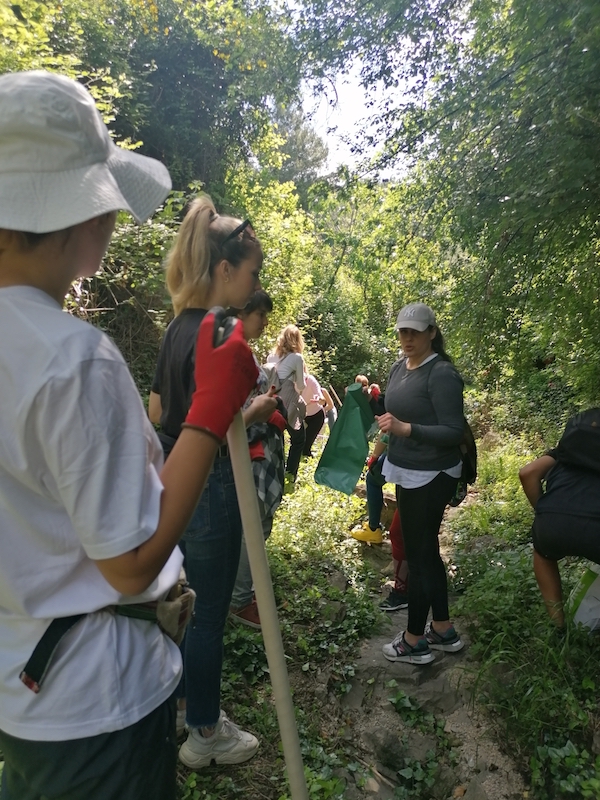
I was invited to participate in the cleaning action by my friend from 'Sunce', then I invited my colleague from the Split scout association. In fact, I was waiting for my friends from Zagreb to come to Split for a weekend, as I got an invitation. My friends were going to relax in sunny Split - for one of them it was supposed to come to Dalmatia for the first time - and I was thinking about an easy beach & bar program for them. But then I decided that Saturday cleaning in the suburbs would be a nice beginning of the weekend. Actually, it shows that our lovely Split is not only a tourist spot to chill, it's a city that cares about the ecology and provides an enabling environment for living.
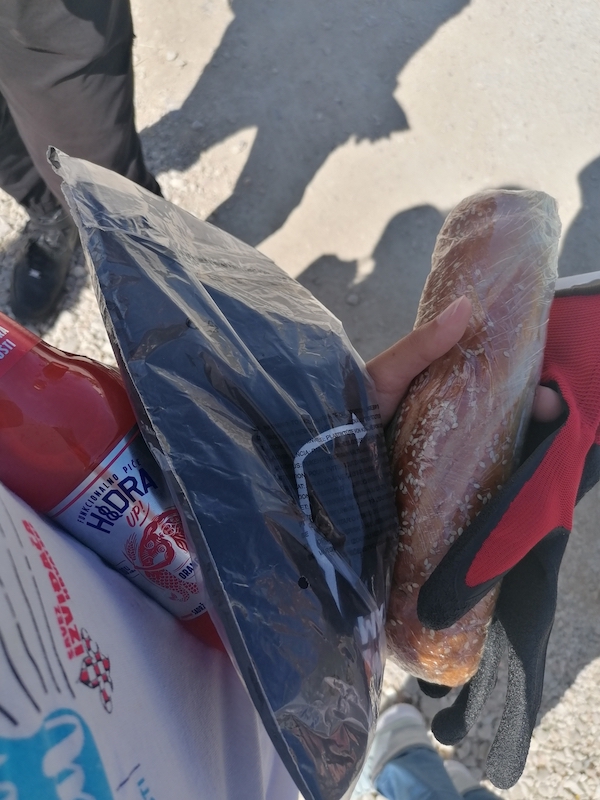
We met with 'Sunce' staff at 09:00 am and came to the garbage dump in Solin at 09:30. Offhand, half of the volunteers came from Split and a half from Solin. Among volunteers, there were local people from the Split neighborhoods as well as expats from North Macedonia, Russia, Italy, and Germany. Some staff of the Zagrebačka pivovara office located in Dugopolje joined us too. In sum, we were around 25 people on the first Saturday, 22 May, and around 10 people on the second Saturday, 29 May. Therefore, the first Saturday team handled all the garbage in a little over two hours, while the second team used all the time allotted (4 h).

Zagrebačka pivovara provided us with cleaning tools, protective gloves, corporate identity t-shirts, and some snacks and non-alcohol drinks at the beginning. Within two hours we collected about 30 large garbage bags. By the way, we have learned that it's easier to clean dense clusters of garbage, probably, typical weekend grill places, than garbage disseminated along the road. My first finding was a funny child's toy. The second finding was a thrown can of Ožujsko pivo. My friends competed to find the oldest soda can or bottle. If I'm not mistaken, a Coke from1993 won this competition.
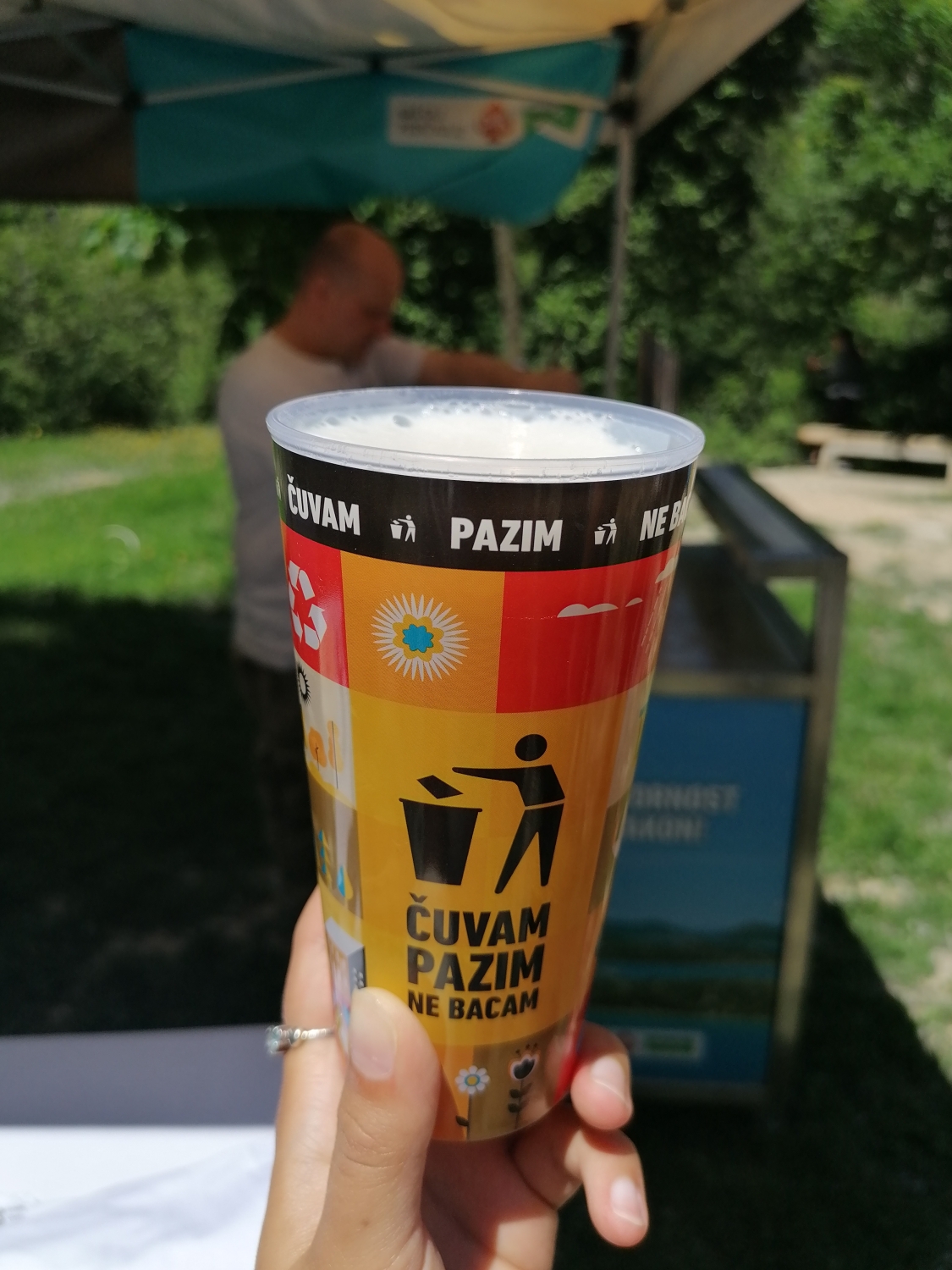

With all the garbage bags filled, we created a live chain and put it together on the side of the road from where it will be taken for disposal. I really enjoyed the atmosphere of solidarity and cooperation in our chain speaking in Croatian, Russian and German simultaneously. Upon cleaning, we moved to a beautiful nature place in Solin - Odmorište uz rijeku Jadro (Rest area along the Jadro river). There, Zagrebačka pivovara offered us a grill and beers in the fresh air. It was a good reward for good work and a great chance to get to know the people you're volunteering with.
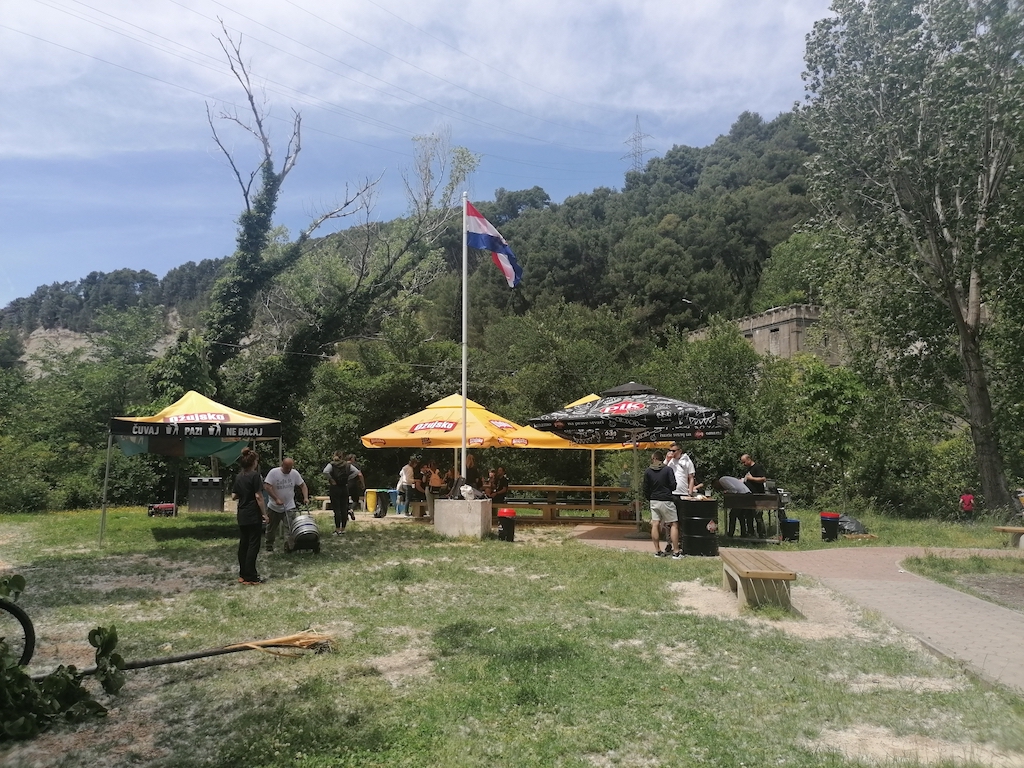
For more, follow our lifestyle section.
Rijeka: Is Fiume Italian or Not? A Centuries-old Controversy
June 3rd, 2021 - Hailed as the EU’s “port of diversity” after its designation as European Capital of Culture in 2020, Rijeka literally means “river”, or “fiume”, in Italian. But what Italian heritage is left in “the city that flows”? Is Fiume Italian or not?
If you’ve ever been to Trieste, one of the first things that will strike you on the first visit to Rijeka is how similar they look. Austro-Hungarian buildings, a lively city port that opens up into the clear blue of the Adriatic, a lot of city green, the hills sprawling behind it, the mix of languages, the traffic (!). There are indeed many things that Trieste and Rijeka have in common. So the question isn’t entirely out of place: is Fiume Italian or not? What Italian heritage is left in what is now Croatia’s third-largest city?
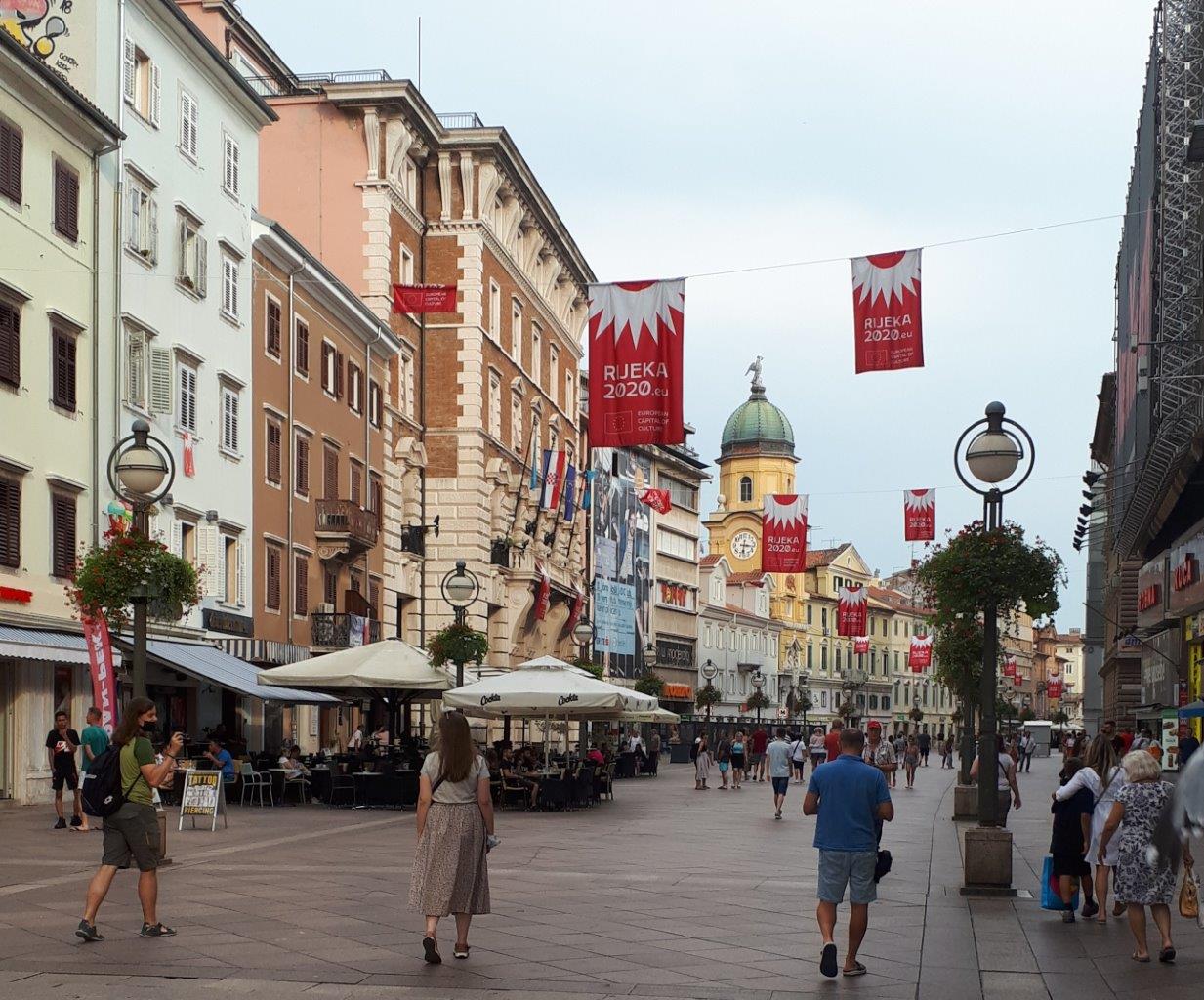
The Korzo. Photo Sabrina Fusari
Literally, Rijeka means “river”. This may be part of the reason why Italians still call it “Fiume”. Actually, this name dates back to imperial Roman times, when Augustus rebaptised the old Trsatica “Flumen”. But the issues of the borders between Italy and former Yugoslavia weren’t actually settled until 1975, and it’s still a burning wound for many Italian families that fled or were forced to leave the area after World War II. This major tragedy went down in history as the Istrian-Dalmatian exodus. Many also lost their lives, as a yet unknown number of local ethnic Italians were killed or summarily executed. So the question “is Fiume Italian or not?” isn’t entirely controversy-free for either side involved, even in 2021.
Interested in finding out more about Rijeka? Click here.
The Fiume question
The controversy is centuries old. Rijeka was an autonomous city at several stages in its history, starting from 1719, when Charles VI proclaimed it a free royal port within the Habsburg Empire. Apart from a short spell under Napoleon’s rule, and two decades under the Kingdom of Croatia, after Ban Josip Jelačić’s had conquered it, Rijeka enjoyed a high level of autonomy and prosperity. It was also at the crossroads of different languages and cultures, especially Italian, Croatian and Hungarian.

Map of Rijeka from the Italian Baedeker Handbook for Travellers, 1911. Photo Karl Baedeker. Public domain, via Wikimedia Commons
World War I and the “unredeemed borderland”
Just before World War I, Rijeka’s population was 48.6% Italian, 25.9% Croatian and 13% Hungarian. This is why the Fiuman dialect has historically retained traces not only of Italian but also of čakavski, German and Hungarian. However, this free multinational and multilingual city was also one of Italy’s so-called “unredeemed borderlands” (terre irredente). Therefore, the then young Italian state saw it as highly symbolic and hoped to integrate it into its territory. Italy had seen the partition of the Austro-Hungarian Empire after World War I as the ideal opportunity to achieve this goal. Yet, the Paris Peace Conference (1919) did not settle the issue, as both Italians and Croats claimed sovereignty over Rijeka.
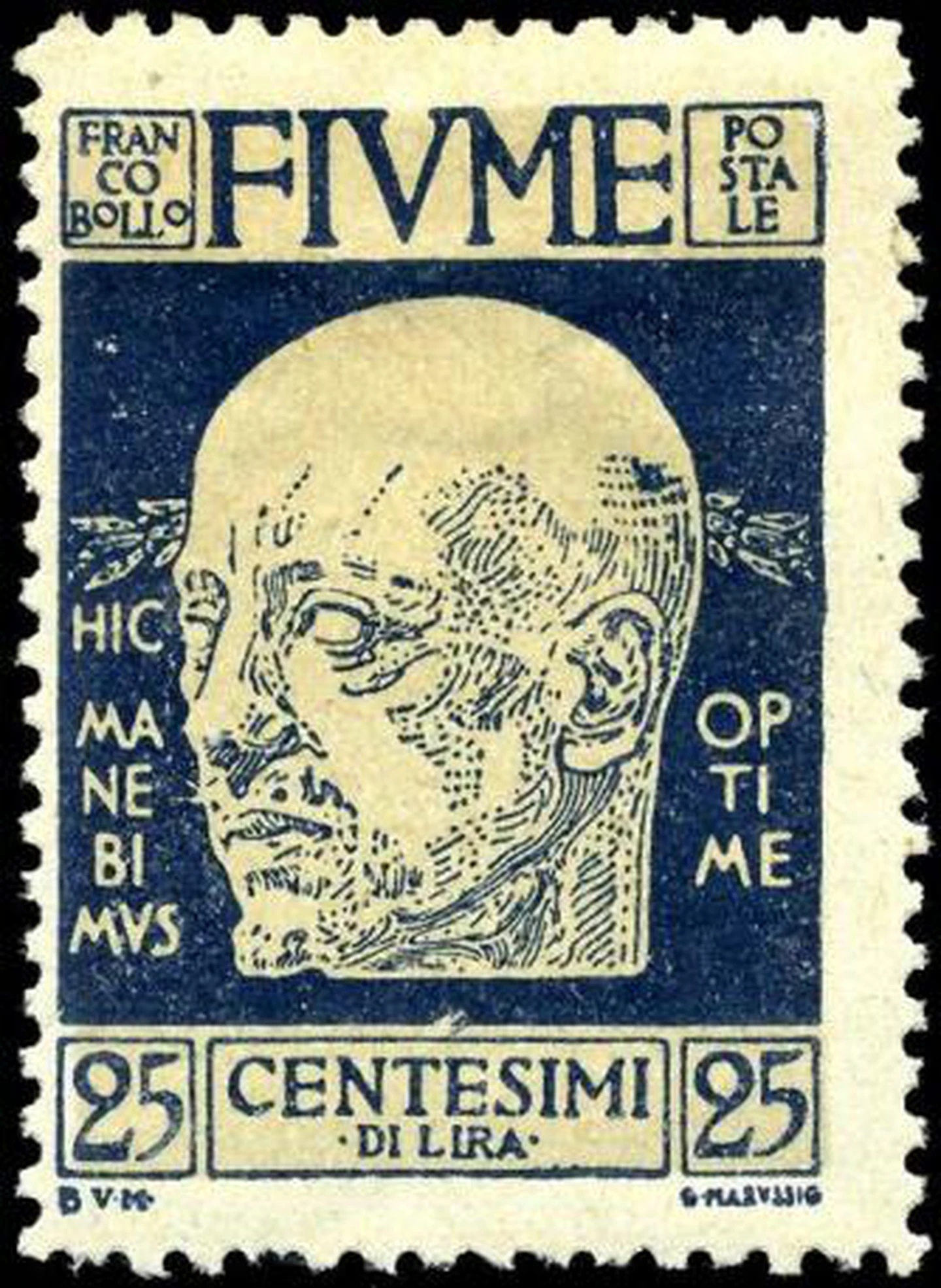
Stamp depicting Gabriele D’Annunzio, 1920. Photo Stan Shebs. Public domain, via Wikimedia Commons
Gabriele D’Annunzio
The dispute ended in a military occupation led by Italian soldier-poet Gabriele D’Annunzio on 12 September 1919. This date still makes a lot of meaning to the city of Rijeka. However, the kind of meaning it makes is very different for Italian neo-fascists, who still claim the city to be a part of Italy. D’Annunzio’s “Fiuman adventure” did not last long (it ended on 24 December 1920) but it sowed the seed of what would materialize 4 years later as the fascist occupation of Rijeka. D’Annunzio had actually galvanized Italian proto-fascist nationalists by refusing to sign the first Rapallo Treaty (November 1920) under which Rijeka became a “corpus separatum delimited by the boundaries of the town and district of Fiume” - so, again, an autonomous city. Despite having gained Gorizia, Istria, Trieste, Zadar and the islands of Cres, Lošinj, Lastovo and Palagruža, for D’Annunzio and his “arditi” (a military corps, literally “the daring ones”) this was still a “mutilated victory.” The controversy is still so heated that, in May 2021, a D’Annunzio statue celebrating irredentism and the occupation of Rijeka was vandalized.
Italian-Yugoslav border on the Dead Channel in Rijeka, 1933. Public domain via Wikimedia commons.
The fascist occupation and the “Dead Channel”
During the fascist occupation, only Sušak remained in Yugoslavia, as the fascists claimed it was the only municipality of the area where Croats were the majority. The border was placed on the so-called Mrtvi Kanal (“Dead Channel”), near the Hotel Continental. This interesting name for a channel identifies the original bed of the river Riječina, which had been deviated in the nineteenth century to prevent floods. This dock building work left that area of the Rijeka port “dead”, i.e. an auxiliary basin, secluded from the rest of the harbour. The Italian translation of Mrtvi Kanal, “canal morto”, is itself a Venetian seamanship term, identifying the original streambed of a water basin.
Eventually, the existence of the Dead Channel state border originated the idea that the city was “Fiume” to the west of the bridge, and “Rijeka” to the east. This adage is quite debatable historically, but it can still be heard in popular culture today. The border itself was closed in 1946, but only a year later was Sušak reunited with Rijeka, under the Paris Peace Treaties. However, the border dispute with Italy was not definitively settled until 1975, with the Osimo Treaty.

Vrnjak, now a ghost town, inhabited by Italians before the exodus. Photo Robert Krajcar & Martin Močibob via Abandoned Croatia.
World War II and the Italian exodus
Meanwhile, a yet unknown number of Italians left the area, were ethnically cleansed or killed in reprisal, changing Rijeka’s language and culture landscape in ways that are still being researched by historians, architects and sociologists. This is still a very contentious issue, not only in Croatia but also in Italy. For sure, the exiles weren’t as gracefully welcomed to the homeland as it’s typically reported in the official version of this history. For example, on 18 February 1947, a train packed full of exiles arriving from Istria was assaulted at Bologna main station. An infuriated crowd of railway workers and passers-by threw stones and prevented the passengers to get off. The mob shouted insults at the refugees, openly accusing them of being runaway fascists until the train had to leave for another destination. Others faced an even crueller destiny, being massacred or sometimes even thrown alive in the foibe, the deep natural sinkholes typical of the Karst region. The actual number of people who lost their lives so tragically is still officially unknown, as estimates range from millions, according to far-right Italian politicians, to several hundred, according to a few left-wing former partisans. Regardless of how many Italians were actually murdered, what is striking is the similarity between the narration of their own experience and more recent reports of ethnic cleansing in other parts of Croatia during the Homeland War.
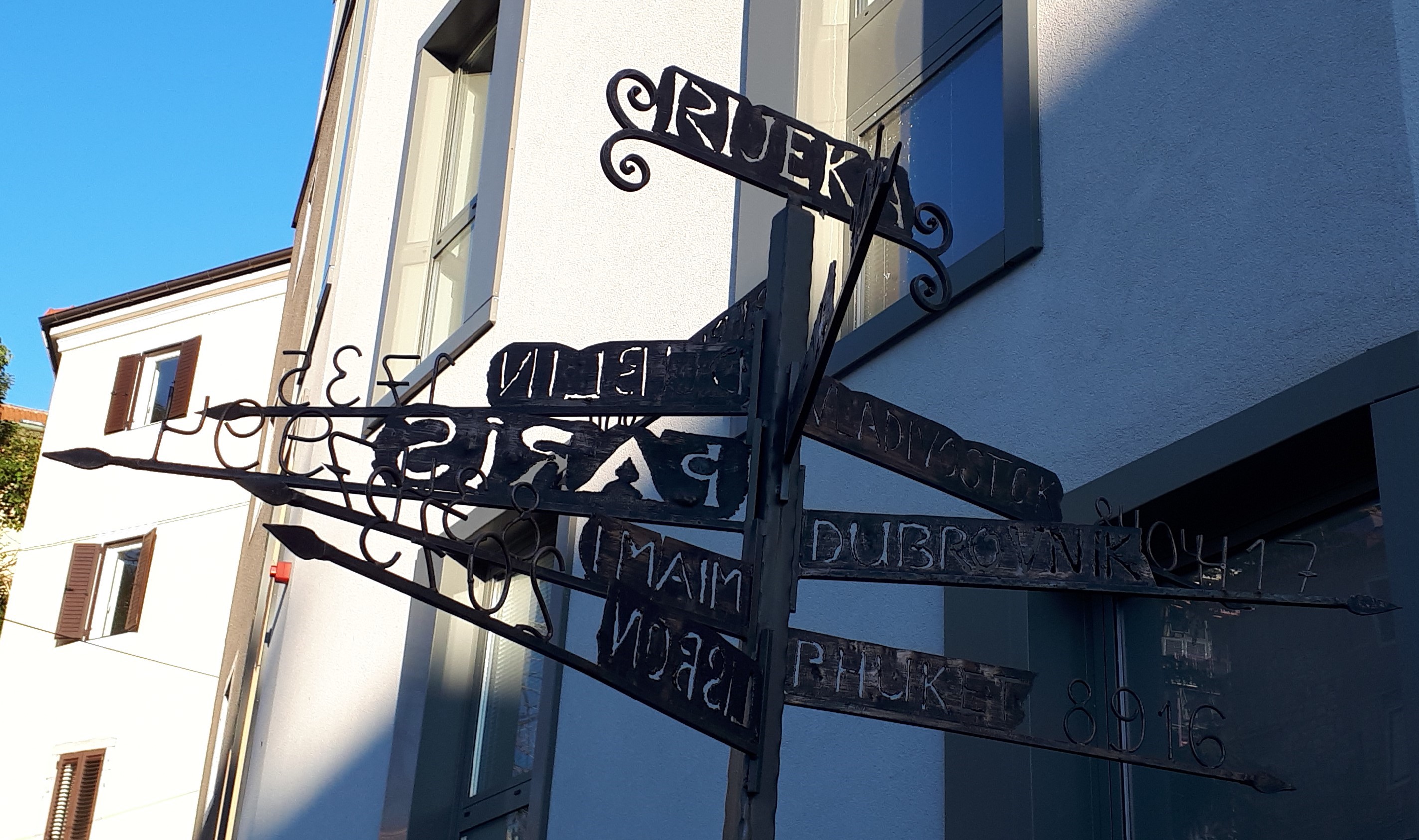
Street art in Rijeka. Photo Sabrina Fusari
Vestiges of Italy in Rijeka today
In 2019, after an incident during which an Italian flag was raised at Trsat Castle, mayor Vojko Obersnel answered the question “is Fiume Italian or not” in no uncertain terms: “Rijeka is a Croatian city and always will be”. However, the city still has a sizable number of Italian speakers, and a vibrant Italian culture, as we review below.

Italian High School Rijeka. Photo Sabrina Fusari
Bilingualism
In comparison with about a hundred years ago, today’s Rijeka has a minority of Italian speakers: the 2011 census recorded 3,429 mother-tongue Italians in the region, as opposed to 26,564 in 1900. However, the situation may be more complex than the raw figures suggest, as many social factors are at play in deciding what languages are spoken at home and handed down to younger generations. Official Croatian-Italian bilingualism was abolished in Rijeka in 1953, but Italian - or, more frequently, a variety of the Venetian dialect - can still be heard spoken in the streets. Italian words are occasionally dropped in also in Croatian conversation. It’s actually very easy for Italian tourists in Rijeka and its coastal region to communicate with locals in their own language without any problems in almost all situations. Double-language road signs are also quite widespread, especially in the city centre. The debate whether both names, “Rijeka” and “Fiume”, should appear on road signs at the entrance to the city, however, goes on to this day. Recent research suggests that trilingualism is also quite common in Rijeka, with families switching from Croatian to Italian and Fiuman, depending on how formal the conversation is. These households use Croatian as the official language, in all situations, Italian in semi-formal settings, and Fiuman almost exclusively at home.
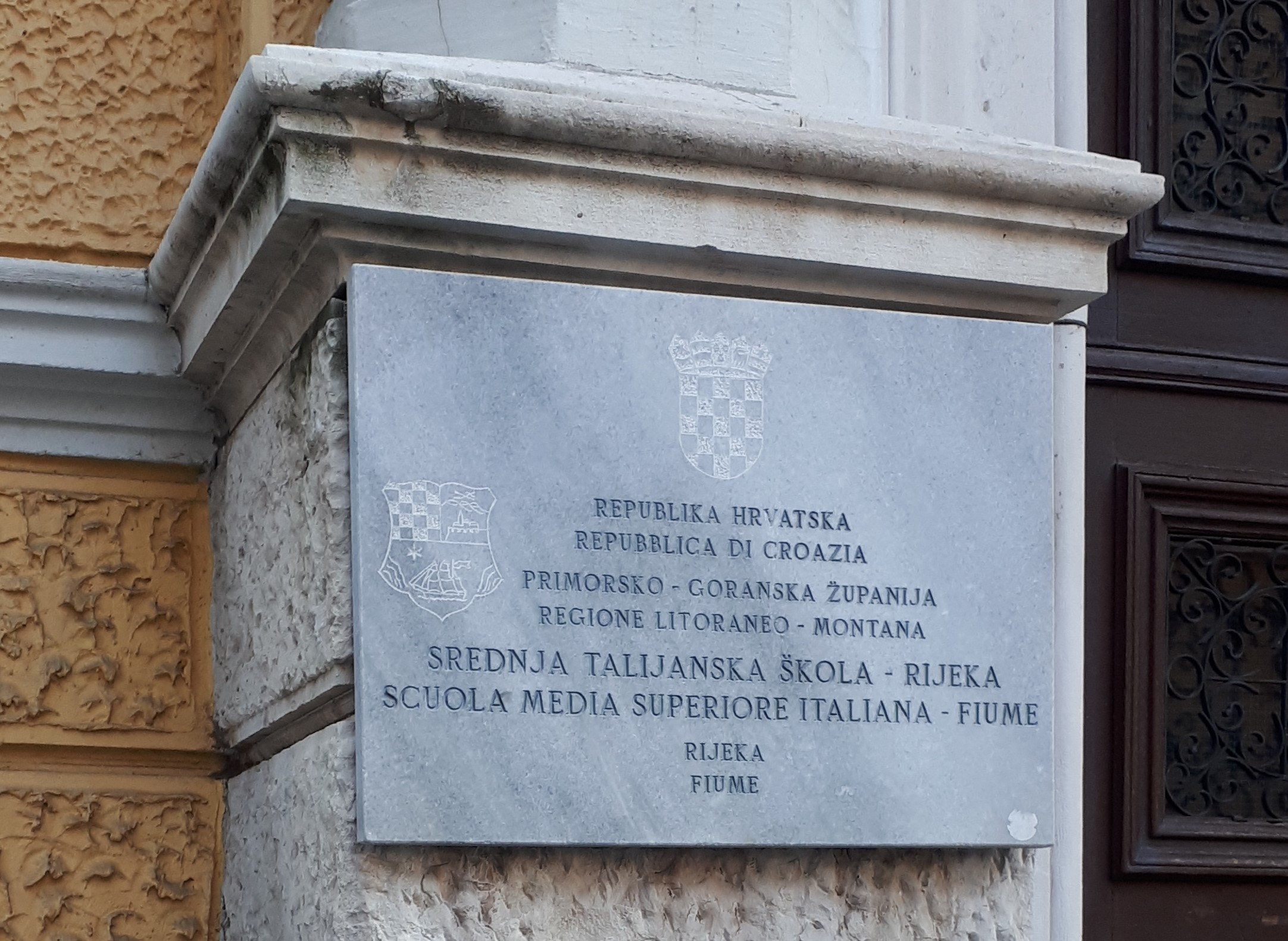
Italian High School Rijeka-Fiume. Photo Sabrina Fusari
Schools
There are many Italian schools in Rijeka: 6 kindergartens, 4 elementary, and 1 high school including 5 different strands: general, linguistic, scientific, touristic and commercial. All follow the Croatian national curriculum, and all subjects are taught in Italian, apart from Croatian language and literature, as well as foreign languages.
In the past few years, the kindergartens have taught 127 pupils a year, the elementary schools about 80, and the high school about 160.
Do you want to find out more about the Italian High School in Rijeka? Listen to the pupils’ own voices in this video.
EDIT
But perhaps the sturdiest stronghold of Italian culture in Fiume today is its Italian publishing house, EDIT. Its headquarters and bookshop are well visible in the heart of the Korzo. Founded in 1952, EDIT is a nonprofit organization owned by the Italian Union of Croatia and partially funded by the Croatian, Slovenian and Italian governments. Its main aims are to fulfil the right of access to information for the Italian-speaking minorities of Croatia and Slovenia, and to protect the cultural and linguistic identity of the Italian communities in these two countries.

EDIT publications, 2007. Photo Roberta F. via Wikicommons licence.
Besides schoolbooks and 10 book collections encompassing both fiction and non-fiction, EDIT also publishes the only Croatian newspaper in Italian, La Voce del Popolo (The Voice of the People), and 3 magazines, including a literary one (La Battana, named after the traditional fishing boat of Rovinj) and a monthly children’s picture book (L’Arcobaleno, The Rainbow, formerly entitled Il Pioniere, in Yugoslav times). The Italian Union of Croatia also owns a radio that broadcasts in Italian, Radio Fiume, but the main outlet of Italian language and culture in today’s Rijeka is undoubtedly La Voce del Popolo.

National Theatre Rijeka. Photo Antonio199cro via Wikicommons licence.
The Italian Theatre
However, Italianness wouldn’t be such without a big role for the arts. Interestingly, the Italian Theatre in Fiume has been the only theatrical company allowed to go on performing Italian drama even during the pandemic, as theatres in Italy were closed for over a year due to COVID-19. At the time of writing, theatres in Italy have just partially reopened, with many limitations, while Croatia has always maintained a more flexible policy on this matter. This has allowed the Dramma Italiano di Fiume to keep this fundamental tenet of Italian culture alive over the past year and a half. The Dramma stages many different genres, both classic and modern, Croatian, Italian and international. Besides professional actors, non-professional acting groups, including ones for children, also perform with this company. For example, on stage at the time of writing is Siniša Novković’s Adriatico/ Adriatiko, a musical comedy about the Adriatic sea, performed in cooperation with the City Youth Theatre of Split.
Do you want to watch the trailer for Siniša Novković’s Adriatico/ Adriatiko? Click here.

Sunrise on the Riva Boduli. Photo Sabrina Fusari
Fiuman Local Literature
Despite what we have seen above, EDIT is not the only publishing outlet for the Italian language and culture in Rijeka. Just about a year ago, a book entitled Il dialetto fiumano. Parole e realtà (The Fiuman Dialect. Words and Reality) was published by the Council of the Italian National Minority of the City of Rijeka, in cooperation with the local University. The aim of this project is to deliver recent research and information on the current status and perspectives of the Fiuman dialect as still spoken in Rijeka. What better way, then, to conclude this overview of whether Fiume is Italian or not than a poem in the local Italian dialect, translated into English for Total Croatia readers?
Cavaliere DI GARBO (Gino Antoni) 1877-1948
La nostra lingua Per far sti versi mi o misiado insieme Lagrime con sorisi in una tecia, E ve o buta – co sto miscuglio freme – Un fia de lingua de la zita vecia. El sofrito l’o fato con zivola, Grasso nostran e pevare abondante. Cussi la lingua che ve porto in tola La xe, se sa, un poco pizigante. La xe la lingua de la nostra gente, Con ela, mama, ti m’ha oferto el sen, Con ela el cor, Nina, parlar te sente. Con la mia lingua, cha dispreza el fren, Mi ve ripetero eternamente: “Fioi, semo in pochi, volemose ben!” |
Cavaliere DI GARBO (Gino Antoni) 1877-1948
Our language To write these verses I’ve mixed together tears and smiles in the same jar, and I’ve poured – blending in this mixer – a sniff of my old city’s patois. I’ve stirred some onion in the sauce, pepper and lard, homemade and juicy. Just like the language I lay here on the table is, you know, a little spicy. It’s the language of our people, the one you, Mother, fed me with your breast, the one my heart, Nina, gathers as you talk. In my language bridlelessly expressed, I will forever repeat and never balk: “Boy, there’s so few of us, let’s spread the love!”
|
45,000 EU Digital Covid Certificates Issued in Croatia So Far
June 3, 2021 - There have been 45,000 EU digital COVID certificates issued in Croatia so far.
All Croatian citizens who have been vaccinated against COVID-19, have a negative test, or have recovered from COVID-19 in less than six months can get their digital covid-certificates now, reports Dalmacija Danas.
Citizens can get certificates in printed or electronic form, proving that they have received one of the vaccines registered in the European Union, through the portal e-Citizens or in one of the branches of the Croatian Health Insurance Institute throughout Croatia, except at five HZZO locations - and in Zagreb where certificates are not issued: Margaretska, Mihanovićeva, Kruge, Ivekovićeva, and Branimirova.
Croatia is the first EU member state to establish a system for issuing EU digital covid certificates. Together with Bulgaria, the Czech Republic, Denmark, Germany, Greece, and Poland, it has linked up with the EU's accession to verify the authenticity of certificates.
More than 45,000 covid certificates were issued in Croatia yesterday, of which 90 percent are with vaccinations. Of these, only 4,000 certificates were requested and issued in paper form.
“All citizens who have been vaccinated according to the vaccination program adopted by the Croatian Institute of Public Health must be registered in the central register of vaccinated persons, which is the basis for issuing a digital COVID vaccination certificate. If it turns out that one of the vaccinated citizens is not in the register, we ask them to contact the doctor or health institution where the vaccination was performed with a card and a certificate of vaccination to make a subsequent enrollment of citizens in the list of vaccinated persons," said the Ministry of Health.
Namely, the largest number of citizens who have received the vaccine so far are registered in the central register of vaccinated persons and can easily obtain their COVID certificates in a very short time. However, for various reasons, part of the citizens remained unregistered or registered with incomplete or incorrect data, making it impossible to issue certificates promptly.
As of yesterday, citizens also have the opportunity to check for themselves on the Health Portal whether their vaccination data have been recorded correctly. The fastest way to eliminate these problems is to direct citizens to doctors and institutions where the vaccination was performed. Only the doctor who performed the vaccination is authorized to enter data on the vaccinated person or another doctor of the health institution.
Also, some citizens ask for additional information to obtain a COVID-certificate of recovery, so it should be emphasized that it is issued to a person who has suffered from COVID-19 on the 11th day from the date of the first positive PCR test recorded in the system. Such confirmation shall be valid for 180 days from the date of the first positive PCR test recorded in the system. A certificate of illness is not issued based on a rapid antigen test, as established by the proposal for regulating the EU digital covid-certificates.
Under the Decision of the Civil Protection Headquarters of the Republic of Croatia amending the Decision on temporary prohibition and restriction of border crossings of the Republic of Croatia from 1 June 2021, entry into the Republic of Croatia is also possible for persons unable to exercise digital covid confirmation in the following cases:
- by presenting a certificate of recovery from COVID-19 and receiving a single dose of vaccine within six months of the onset of COVID-19, and vaccination carried out less than 180 days ago,
- by presenting a positive rapid antigen test (listed on the Joint List of EU Member States) confirming that the person has recovered from SARS-CoV-2 virus infection, with the test performed 180 days ago and older than 11 days from the date of arrival at the border crossing or upon presentation of a medical certificate issued by a doctor, determination of self-isolation upon arrival in the Republic of Croatia and for a period of 10 days or until receiving the results of a negative test.
At the European Union level, there are continuous discussions on digital covid-certification, and adjustments are possible in the digital covid-certificate at the EU level, depending on current scientific knowledge and consensus of the profession. Also, like Croatia, each member state can bring additional conditions for entry into its territory that are not covered by the digital covid-certificate, which are then confirmed by presenting appropriate medical documentation when crossing the border.
For all, you need to know about coronavirus specific to Croatia, including travel, border, and quarantine rules, as well as the locations of vaccination points and testing centers across the country, make sure to bookmark our dedicated COVID-19 section and select your preferred language.
Croatian Coast Is No Longer Red On The ECDC Map
June 3rd, 2021 - The European Center for Disease Control and Prevention (ECDC) has released an updated corona map of Europe and the Croatian coast is no longer red!
Jutarnji reports, as seen on the map, the Croatian coast is no longer marked in red, according to the ECDC coronavirus traffic lights system. This is great news for Croatian tourism, just in time for the summer season. Namely, the ECDC map, as far as European tourists are concerned, is considered the most relevant indicator of the safety of a particular destination.
The color chart shows the 14-day incidence of coronavirus in each European country per 100,000 inhabitants.
The Croatian coast is marked in yellow on the updated map, just like most of Europe. The northern part of Croatia, Slovenia, Greece, and a large part of Spain and France, the extreme south of Italy, and the Benelux countries are still marked in red.
#JustPublished
— ECDC (@ECDC_EU) June 3, 2021
Updated ? maps are online!
These maps aim to support the @EUCouncil recommendation on a coordinated approach to the restriction of #FreeMovement during #COVID19 pandemic.
❗️❗️❗️#IE & #SE data not available due to a disruption to the national databases this week. pic.twitter.com/QbtX1YdWiu
The map was posted on the official ECDC Twitter account along with a color-blind version of the map.
Color-blind friendly version of the map:https://t.co/CcBVx6B0o5#COVID19 pic.twitter.com/mN4z1CH3AI
— ECDC (@ECDC_EU) June 3, 2021
The daily number of Croatia cases, specifically along the coast, has decreased, and with the vaccination rolling out, Croatia is confident to have a better season and welcome more tourists than last year.
To check out a more detailed look into the Covid-19 situation by counties and islands in Croatia, CLICK HERE.
For all, you need to know about coronavirus specific to Croatia, including travel, border, and quarantine rules, as well as the locations of vaccination points and testing centers across the country, make sure to bookmark our dedicated COVID-19 section and select your preferred language.
Croatian Tourist Collaboration Between Gospić, Plitvice and Udbina Approved
June 3, 2021 - Taking advantage of the tourist offer at your availability, a Croatian tourist collaboration between Gospić, Plitvice and Udbina has been approved to promote tourism in the country through joint activities between their area.
In order to further contribute to the promotion of Croatian tourism, but also to jointly carry out activities in their areas, the tourist boards of the city of Gospić and the municipalities of Plitvice Lakes and Udbina, received approval to join a Croatian tourist collaboration, reports Turističke Priče. Namely, in order to jointly develop and promote tourist products, tourist communities will act as unique destinations through joint activities.
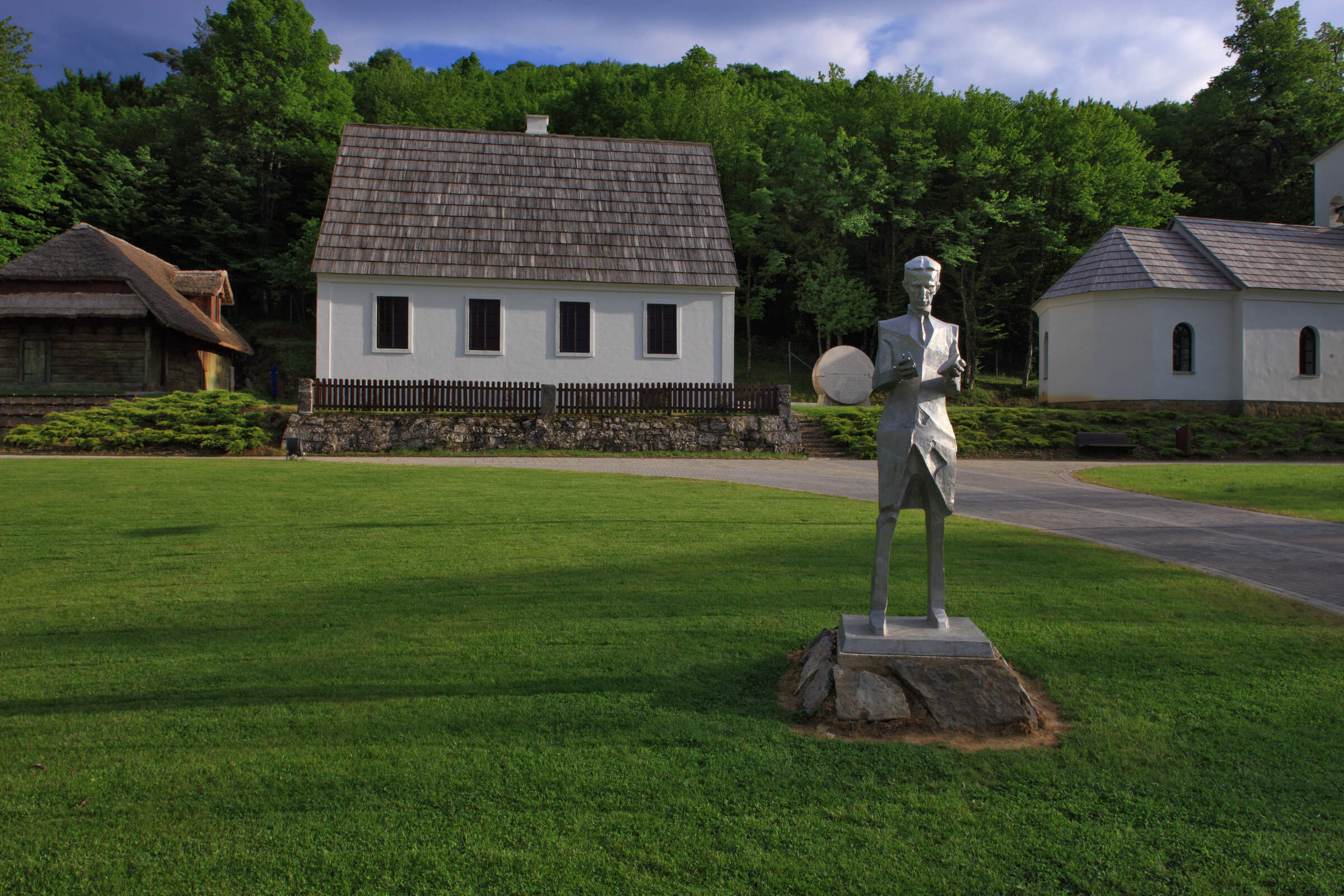
Nikola Tesla Memorial Center, in Smiljan, outside Gospić
This is a story that is not new in Croatia and has proven to be a successful project that contributes to the development of destinations. An additional advantage is that the area of Plitvice Lakes, the town of Gospić, and the municipality of Udbina are located within a radius of 50 kilometers, they touch each other and are located in the same, Unit of Regional Self-Government, Lika-Senj County.
Plitvice Lakes National Park has a world natural pearl and a large number of tourists who can complete their stay in the National Park by visiting the town of Gospić, which is the center of the county, and choose one of many additional sports, tourism, adrenaline or cultural activities.
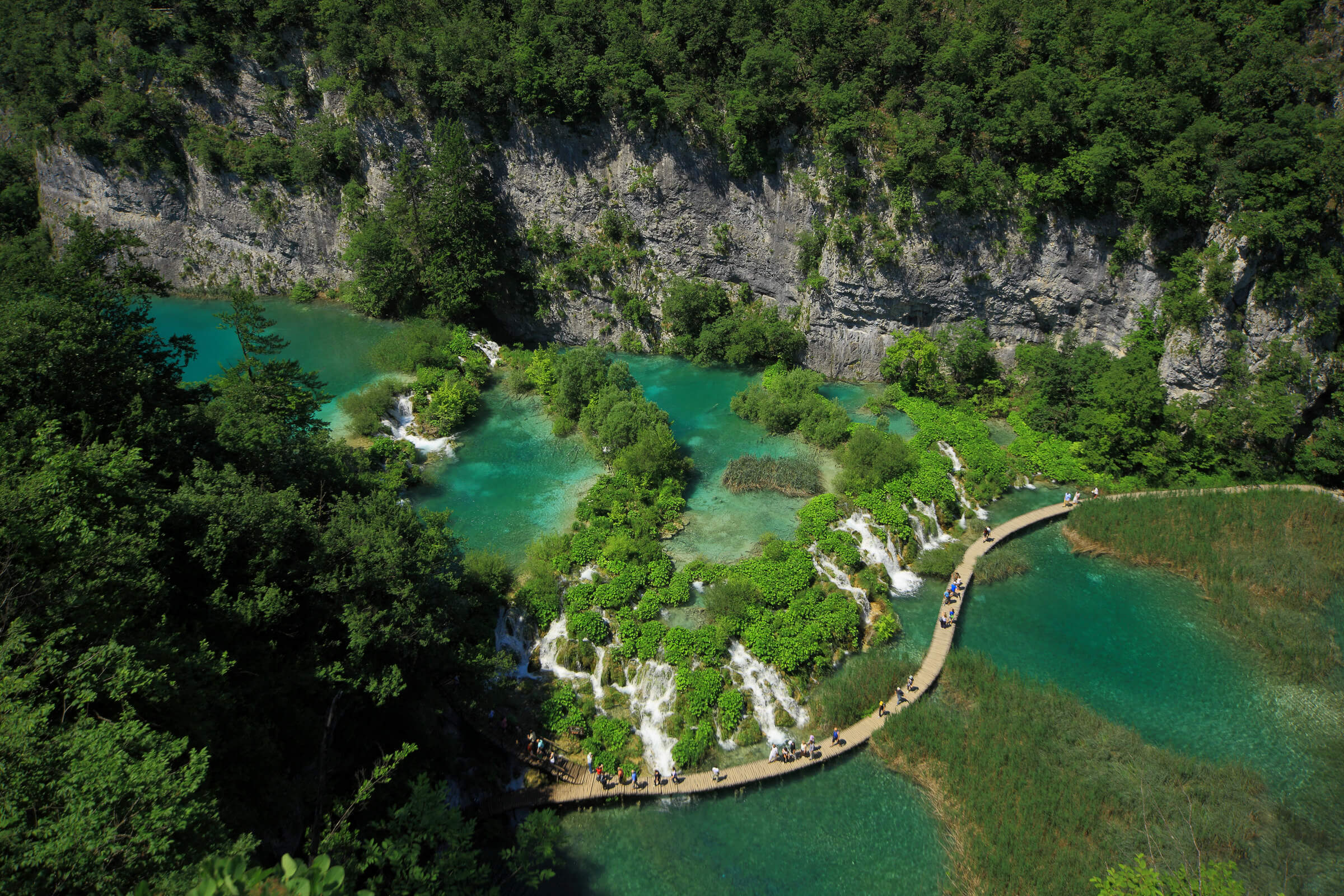
Plitvice Lakes (Photo: Mario Romulić)
The lack of promotion of the historically known and significant area of the Republic of Croatia, the municipality of Udbina, or medieval Krbava, would change with this project and the destination would get a historically and religiously significant role than it has so far. Udbina with its position, historical and cultural significance, religious tourism and natural features, and well-known eco production can greatly contribute to the development of a common tourist destination in the marketing activities ahead, complete the tourist offer, and to the satisfaction of tourists visiting us.
The Croatian tourist collaboration between the three tourist boards will be able to work better on the development of the tourist product and promotional activities of Lika as a character and define the tourist brand of the destination or micro-region as a whole.

Udbina (Photo: Lika Tourist Board website)
The development of a diverse offer and the generation of demand is a prerequisite for year-round tourism, which tourist boards strive for and which must ensure stability and a much more significant impact of tourism on the entire economy. Through year-round tourism, moving away from seasonality, and offering a quality and recognizable product throughout the year, you can conjure up everything that rural destinations have to offer. The aim is to provide visitors with useful and interesting information about the tourist offer of the destination and to show the attractiveness of the destination. In this way, new visitors will be attracted and the destination will be positioned on the tourist market while building the image of the destination as safe, which offers a diverse offer, and keeping this recognizability as a permanent trademark.
Tourist boards are facing the definition of potential future resources, product inventory, and programs for developing the Outdoor offer.
For more on what to do and how to get to Plitvice, check out our dedicated Total Croatia page HERE. Also, visit our 2021 guide on all Croatian National and Natural Parks HERE. Both now in your language!
Follow the latest on flights to Croatia HERE and the latest travel updates and COVID-19 news from Croatia HERE.
For more on travel in Croatia, follow TCN's dedicated page.
Coastal Hazard Monitoring: New Method Developed by Ruđer Bošković Institute (IRB) Scientist-Led Team
June 3, 2021 - With climate change bringing trouble to the coast, coastal hazard monitoring is a must. Meet the new method developed by a research team led by a scientist from Ruđer Bošković Institute (IRB).
Individuals from the scientific Ruđer Bošković Institute (IRB) in Zagreb continue to catch the attention of internationally established scientific journals, such as Marine Science ranked in the top 10% of magazines for the issues of sea and water biology.
This time, IRB's dr. Cléa Denamiel led an international research team that presented an innovative concept of warning on coastal hazards with stochastic methods.
Authors at Standford.edu in a pdf presentation are presenting stochastic methods as methods that involve random variables. They gave an example of multiple arrows flying towards a rock from multiple directions. When they hit the rock, arrows are positioned randomly.
„Nevertheless, you can still use their positions to estimate the location of the target“, explained Standford.edu presentation.
So, the presentation further elaborated that „like using randomly-positioned arrows to estimate the position of a target, stochastic methods have the goal of gaining information out of randomness“.
„To put it simply, current systems of warning are based on numerical methods that require advanced informatical resources, living a huge carbon dioxide print on the environment, while with the suggested appliance of stochastic methods to optimize forecast of coastal hazards and greatly reduce the need for informatics resources while taking elements of coincidence into account“, explained IRB in its official press release.
This is very important as coastal areas are under the increasing influence of climate hazards, particularly sea-level rise. IRB states that its predicted hazards related to sea level directly impact around 630 million people around the world by 2100.
The new method of warning and quantifying data on coastal hazards presented by dr. Denamiel and her team is innovative as all current systems for such monitoring are much more complexed as they are based on numerical models from kilometer to the meter of clearance.“The suggested approach would require fewer resources while keeping or even improving forecasts and assessments of coastal hazards“, concluded, dr. Ivica Vilibić from IRB.
Learn more about Croatian inventions & discoveries: from Tesla to Rimac on our TC page.
For more about science in Croatia, follow TCN's dedicated page.



